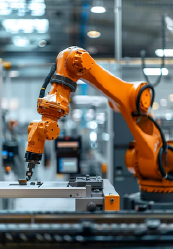Motion Control Market: Making Manufacturing Procedures Effortless
Motion control is a procedure of operating machinery utilizing rotary or linear actuators. Motion control is a sub-field of automation in which position or velocity machines are regulated utilizing a motion regulation gadget such as a linear actuator, electric motor, hydraulic pump, or servo motor. In the motion control market, it circumscribes every technology connected to the motion of devices. Motion control is also indicated as servo control or robotics to proceed with particular loads in a regulated way. A motion control system consists of a control, a drive, a motor, and a load.
Components of Motion Control
- Controller: The controller is just an electronic gadget that acts as the brain of a motion control system, regulating the motor and drive. The number of controllers utilized in a specific application, such as in a production line, will differ depending on the number of discrete procedures that need to be regulated.
- Motor drive: The motor drive acts as an intermediary between the regulator and the motor. It translates the regulator's signal and bestows the motor with an accurate level of power to obtain the desired motion outcome.
- Motor: Motors utilized in motion control structures can attain several configurations and have several differing applications. Their prominent responsibility, albeit, is to acquire elucidation from the motor drive and transform these inputs into motion.
The Market Insight
As per the recent analysis by Polaris Market Research, the global motion control market size was valued at USD 15.02 billion in 2023 and is predicted to reach USD 25.59 billion by 2032. Also, the study states that the market reveals a robust 6.1% Compound Annual Growth Rate (CAGR) over the predicted timeframe, 2024-2032.
How do Motion Controllers Work?
In feedback-dependent systems, motion controllers take an input directive disbursed by the user, juxtapose it with feedback indication from the motor, and administer restorative actions so that the craved input and genuine output complement with little or zero brink of error. When designing trajectories for the motor, the motion controller causes motion profiles. In the motion control market, these are the progressions of motor commands in context to time that stipulate to the motor where and when to position a load. Ultimately, the motion controller utilizes the trajectories fabricated to bring about the accurate torque commands, which are then dispatched to the drive.
Delving into the Dynamics of the Motion Control Market Size and Share to Uncover Key Insights, Request for a Sample Research Report
Growth Drivers
The growing demand for robotic applications in assembling provisions has increased notably in recent years. Robots are utilized in congregation and scrutiny, processing, and substance management. Several motion control solutions are utilized in robotics to sanction appropriate benefits. However, industrial robots render manufacturing procedures effortless, so there is a growing requirement for motion control, thus escalating a market share. Each industrial robot has some motion regulation that enhances productivity, lessens prices, and permits for contemporary reasons to be executed in the course of manufacturing procedures.
End Note
In the motion control market, it is a condemnatory constituent in several tests, and quantifying applications and comprehending the functions of a motion controller is important to obtain the desired results.


